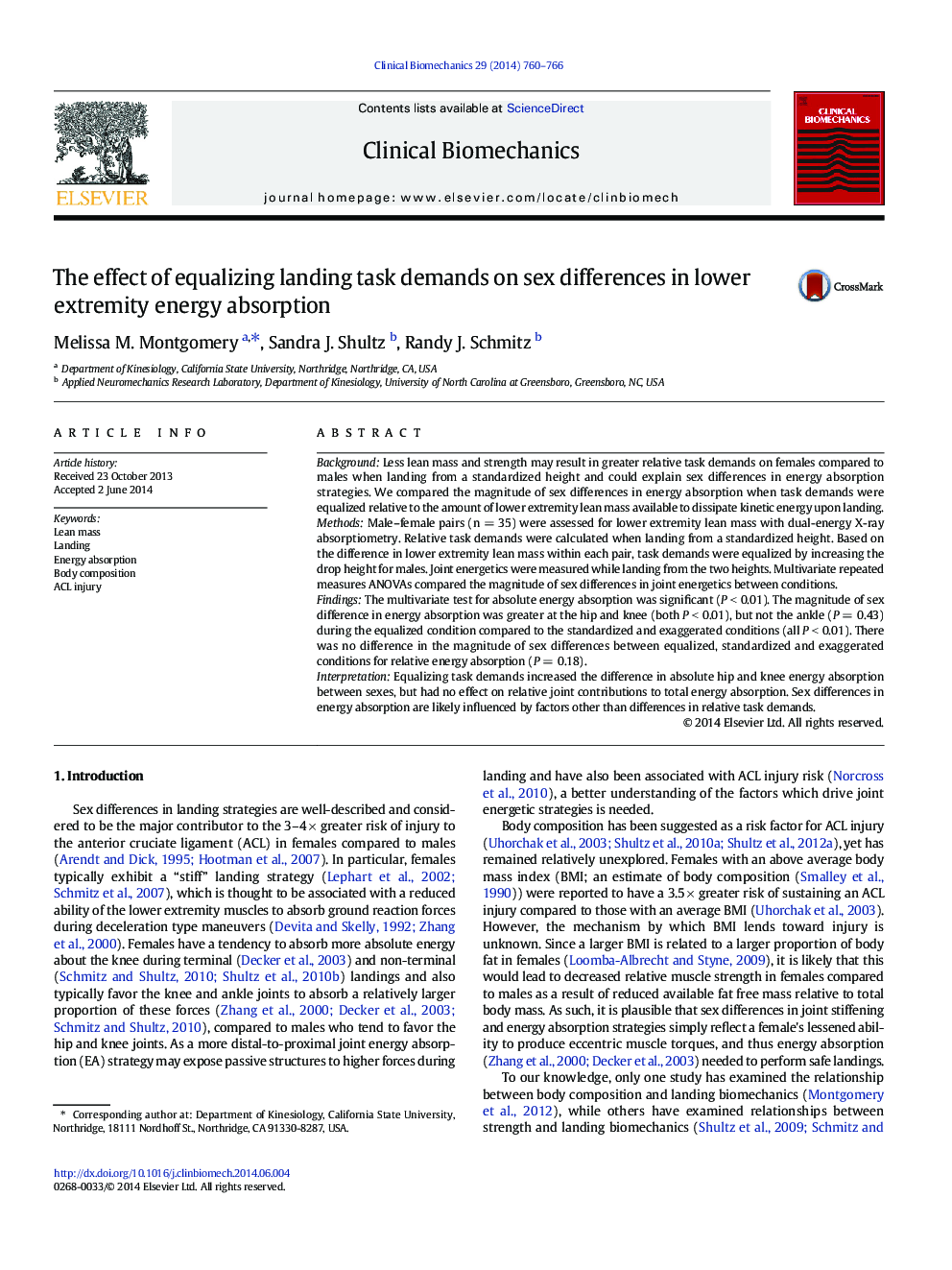| Article ID | Journal | Published Year | Pages | File Type |
|---|---|---|---|---|
| 6204881 | Clinical Biomechanics | 2014 | 7 Pages |
â¢We compared biomechanics in males and females when landing from the same height.â¢We equalized task demands between males and females based on their lean mass.â¢The sex differences in hip and knee biomechanics increased upon task equalization.â¢Sex differences in task demands based on lean mass did not explain biomechanics.â¢Additional factors likely underlie sex differences in biomechanics.
BackgroundLess lean mass and strength may result in greater relative task demands on females compared to males when landing from a standardized height and could explain sex differences in energy absorption strategies. We compared the magnitude of sex differences in energy absorption when task demands were equalized relative to the amount of lower extremity lean mass available to dissipate kinetic energy upon landing.MethodsMale-female pairs (n = 35) were assessed for lower extremity lean mass with dual-energy X-ray absorptiometry. Relative task demands were calculated when landing from a standardized height. Based on the difference in lower extremity lean mass within each pair, task demands were equalized by increasing the drop height for males. Joint energetics were measured while landing from the two heights. Multivariate repeated measures ANOVAs compared the magnitude of sex differences in joint energetics between conditions.FindingsThe multivariate test for absolute energy absorption was significant (P < 0.01). The magnitude of sex difference in energy absorption was greater at the hip and knee (both P < 0.01), but not the ankle (P = 0.43) during the equalized condition compared to the standardized and exaggerated conditions (all P < 0.01). There was no difference in the magnitude of sex differences between equalized, standardized and exaggerated conditions for relative energy absorption (P = 0.18).InterpretationEqualizing task demands increased the difference in absolute hip and knee energy absorption between sexes, but had no effect on relative joint contributions to total energy absorption. Sex differences in energy absorption are likely influenced by factors other than differences in relative task demands.
